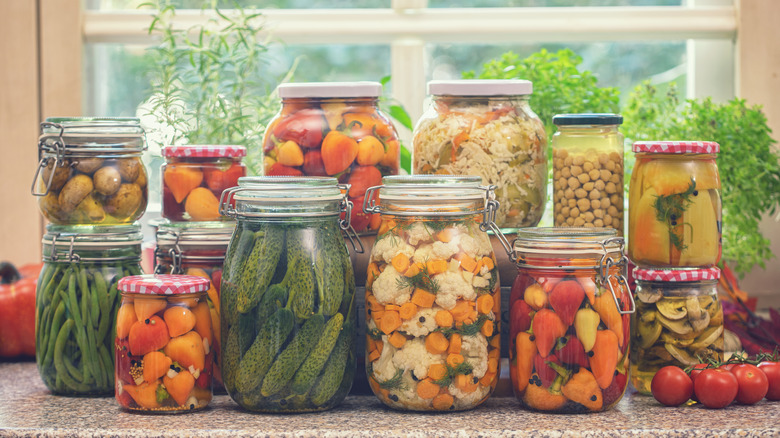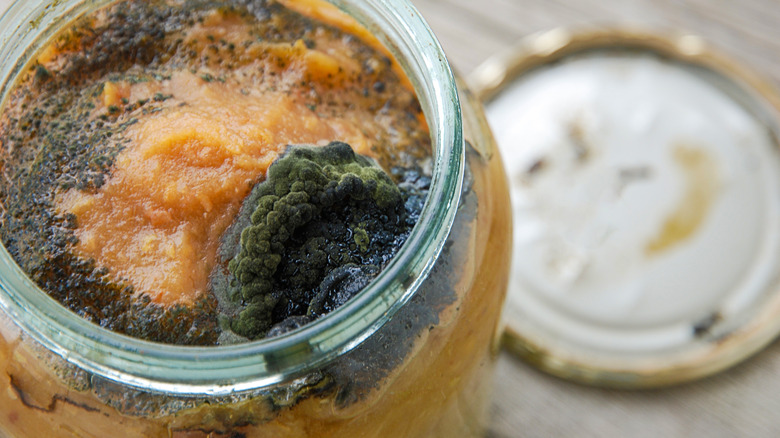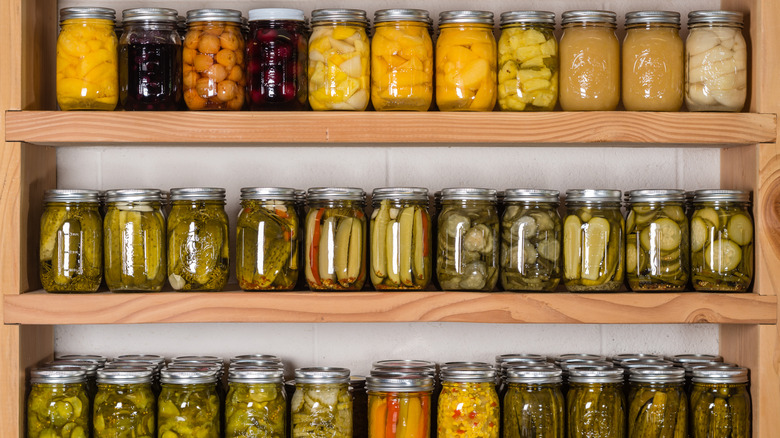The Tell-Tale Signs Your Home-Canned Goods Have Spoiled
Some of the most resourceful, thrifty people in the kitchen are those who practice home-canning. This long-standing food preservation technique has stuck around since the early 1800s, and it's clear why. You're looking at ingredients that can be shelved and used for up to a year if the process is conducted correctly. But if done improperly, or your goods have been left to collect dust for too long, you'll be faced with clear signs of spoilage.
Some of these can even signify botulism, a very serious type of food poisoning that can lead to life-altering side effects or, as it happens, death. This foodborne illness thrives in homemade produce. That means that commonly canned goods, such as fruits, vegetables, and even meat and seafood, are always at risk. The possibility of this fatal contamination makes it all the more important to know what indicators of breakdown to look for plus how to prevent them where possible.
Signs your home-canned food has gone bad
With its many nuances and various methods, it's quite easy to go about home-canning food in the wrong way. And even if you've got the process down and know exactly how to do it, that doesn't change the fact that, at the end of the day, some foods don't last in storage like you think. That's when you might start to see some changes in either your container or the ingredient itself, hinting your food should be assessed.
Your food might be tainted by toxins if the jar it's being kept in has changed from its original state. If it's damaged in any way, such as cracked or dented, the possibility of harmful germs having entered is higher. Similarly, any leaking or bulging of the container is another indicator that a negative change has occurred. But you'll especially know your goods have gone bad if any liquid or foam emerges after opening the jar, revealing cloudy, moldy, or foul-smelling contents. Don't attempt to taste test anything showing these symptoms; throw it away instead.
How to prevent canned goods from spoiling
The best way to slow your food from spoiling is by ensuring you're using the proper canning technique from the start. Different methods are better suited for different types of food. Low-acid foods like vegetables, meat, and seafood, for example, require pressure canning, while higher-acid foods like condiments, jams, jellies, pickles, and tomatoes need water bath canning. Choosing the appropriate approach will make a difference in whether your food is protected from botulism or not.
Where you keep your home-canned goods is also crucial in preventing spoilage. Of the many mindless storage mistakes that ruin your food, don't let location be one of them. These containers are best kept in a cool, dark place away from direct sunlight or heated areas. Between 50 to 70 degrees Fahrenheit is ideal, according to the U.S. Centers for Disease Control and Prevention. It's also recommended that you label your jars with the dates in which you've canned them so you're aware of when the one-year shelf life is approaching. Once this timeline passes, the food's quality may diminish.
Lastly, avoid stacking home-canned items too highly. Similar to how this common pantry storage mistake damages store-bought canned food, placing multiple jars atop each other can damage their vacuum seal and allow contamination. It's best to only stack two containers maximum, and a supportive, firm barrier, such as cardboard, should be placed between the layers.


